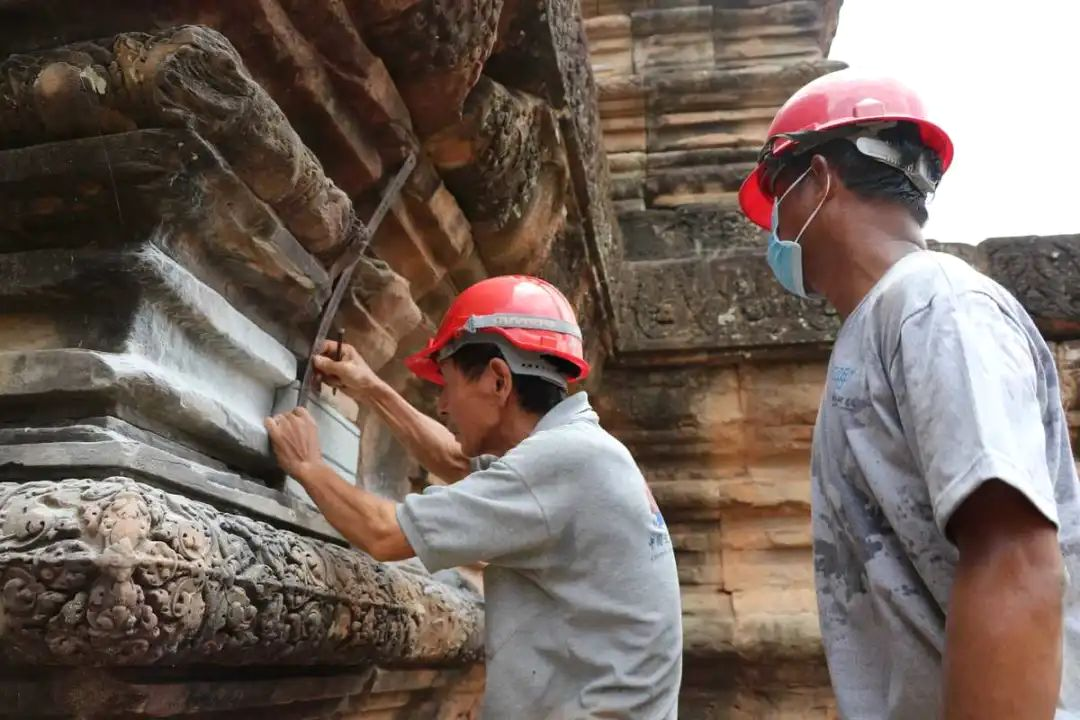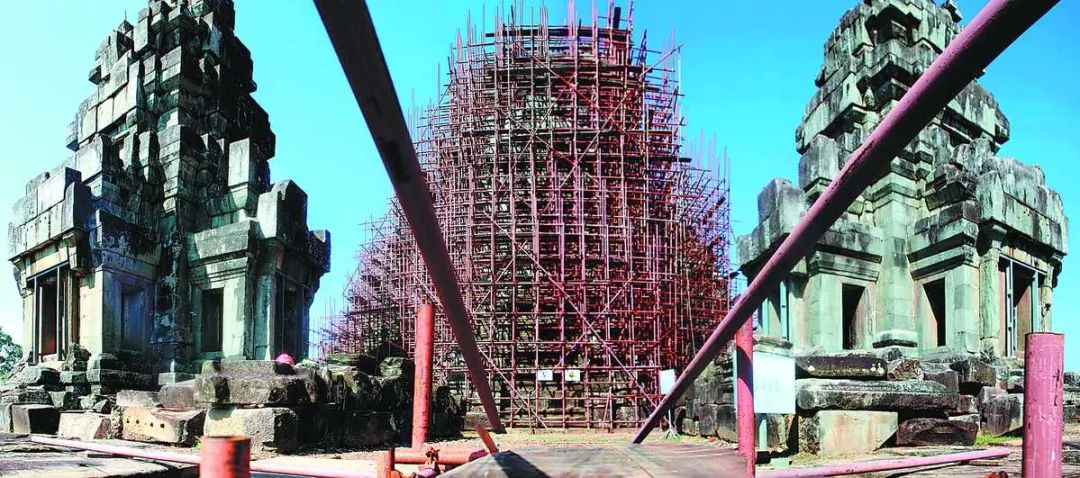Xu repairs cultural relics in Cambodia
In 1296, Zhou Daguan, a geographer of the Yuan Dynasty, embarked on a journey to Angkor, the capital city of Cambodia. Inspired by his experiences, he penned “The Customs of Cambodia” to document the sights and tales he encountered. Centuries later, this book was translated into French, leading adventurers to the long-lost Angkor complex, concealed within dense forests. Today, Chinese cultural relic restorers have arrived in Cambodia, breathing new life into Angkor’s ancient treasures. Their expertise and dedication contribute to the ongoing restoration efforts, leaving captivating narratives of collaboration and cultural preservation.

Chinese cultural relic restorers work in Cambodia.
In 1992, the Angkor complex, encompassing over 400 cultural relics, was inscribed on the World Heritage List. China was one of the first nations engaged in the protection and restoration of Angkor’s historical monuments, and Chinese cultural relic restorers, affectionately known as “Chinese doctors,” possess a unique expertise in performing “surgical” interventions on cultural relics.
In 1998, at the initiative of the China Academy of Cultural Heritage, a team of Chinese experts was dispatched to Cambodia to embark on their inaugural project: the restoration of the magnificent Chau Say Tevoda temple, which traces its origins back to the 11th century.
All team members from China are skilled professionals in cultural conservation. However, when they initially started working on the conservation and restoration of Angkor’s cultural relics, they encountered numerous new challenges. Xu Yan, who has dedicated many years to preserving the Angkor complex, recollected, “Prior to the restoration, the Chau Say Tevoda temple was in a state of architectural ruin with crumbling walls. It was one of the most severely damaged temples within the Angkor complex.”

A cultural relic in Cambodia is under renovation.
“Based on the condition of the structure, we established the guiding principle of ‘emergency reinforcements, site protection, and essential restorations’,” Xu explained. “We focused on reinforcing the foundation and meticulously assembling over 4,000 fragmented components, carefully returning them to their original positions.” After seven years of diligent on-site construction, the Chau Say Tevoda temple reemerged from its previous state of ruin.
Upon completing the restoration of the Chau Say Tevoda temple, the Chinese experts were faced with an even more formidable task – the restoration of the Ta Keo temple. This iconic national temple not only spanned a larger area, but also had numerous structurally compromised sections, with tens of thousands of scattered stones needing attention. Complicating matters further, unlike the previously restored temple, Ta Keo had never been fully completed, presenting additional challenges for restoration. The Chinese team dedicated eight years of meticulous work to the project, and in November 2022, they proudly handed over the fully restored Ta Keo temple to Cambodia.
In 2019, the Cambodian government entrusted China with the responsibility of restoring the royal palace situated in the heart of the Angkor complex, marking the third phase of the conservation and restoration project. The restoration of the royal palace lasted eleven years and encompassed a broad range of initiatives. These included the restoration of cultural relics and buildings, archaeological research, protection of stone carvings, establishment of laboratories, construction of an exhibition center, environmental remediation efforts, and the creation of a captivating display of the ancient ruins. Xu said, “Initially, our focus was solely on restoring the cultural relics. However, as the project progressed, we devised a sustainable development approach that integrated heritage preservation with its public exhibition and utilization.”
Text by our staff correspondents
Translated by YNTA